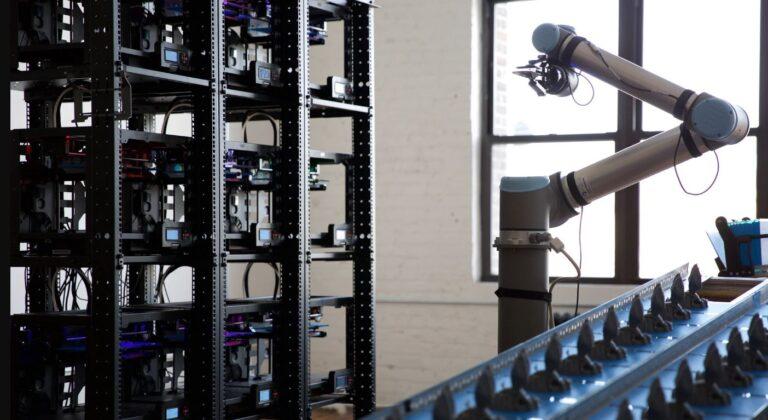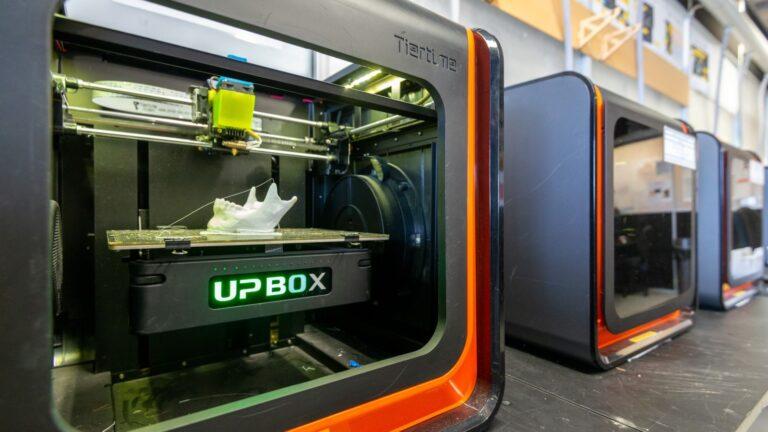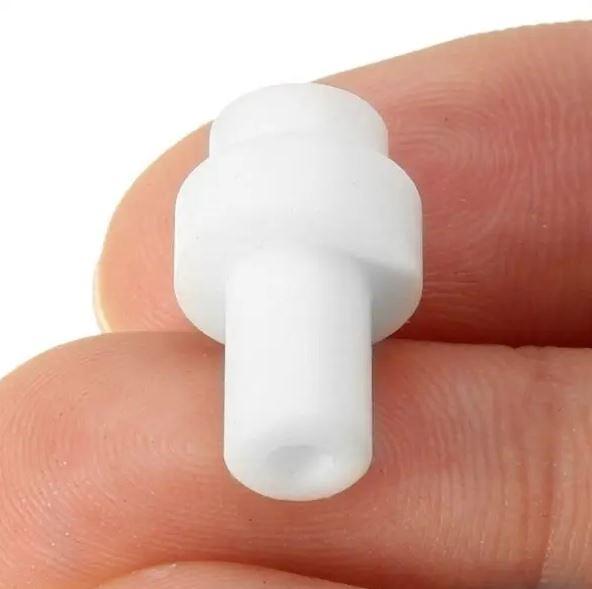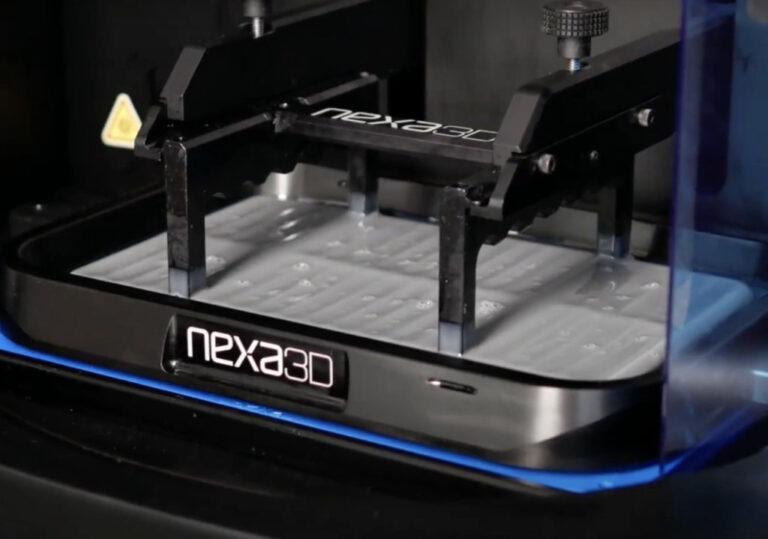The Art and Science of Debinding Ovens
Debinding ovens are an essential tool in many manufacturing industries, particularly those that rely on metal injection molding, ceramic injection molding, and 3D printing technologies. The manufacturing process involves using binding agents to hold together metal or ceramic powder during molding or printing. To remove these binding agents, manufacturers use debinding ovens. The debinding ovens actively remove the binding agents and facilitate the production of high-quality metal or ceramic components. This process is critical because it prepares the part for the next stage of processing, such as sintering or densification.
Despite the critical role that debinding ovens play in manufacturing, there is a lack of comprehensive resources available to guide users through the process of selecting, operating, and maintaining these ovens. The Art and Science of Debinding Ovens aim to fill this gap by providing a comprehensive guide to debinding oven technology.
This post will be of interest to engineers, technicians, and manufacturing professionals who work in industries that rely on debinding ovens. It will also be useful to students and researchers who are studying the science behind debinding oven technology.
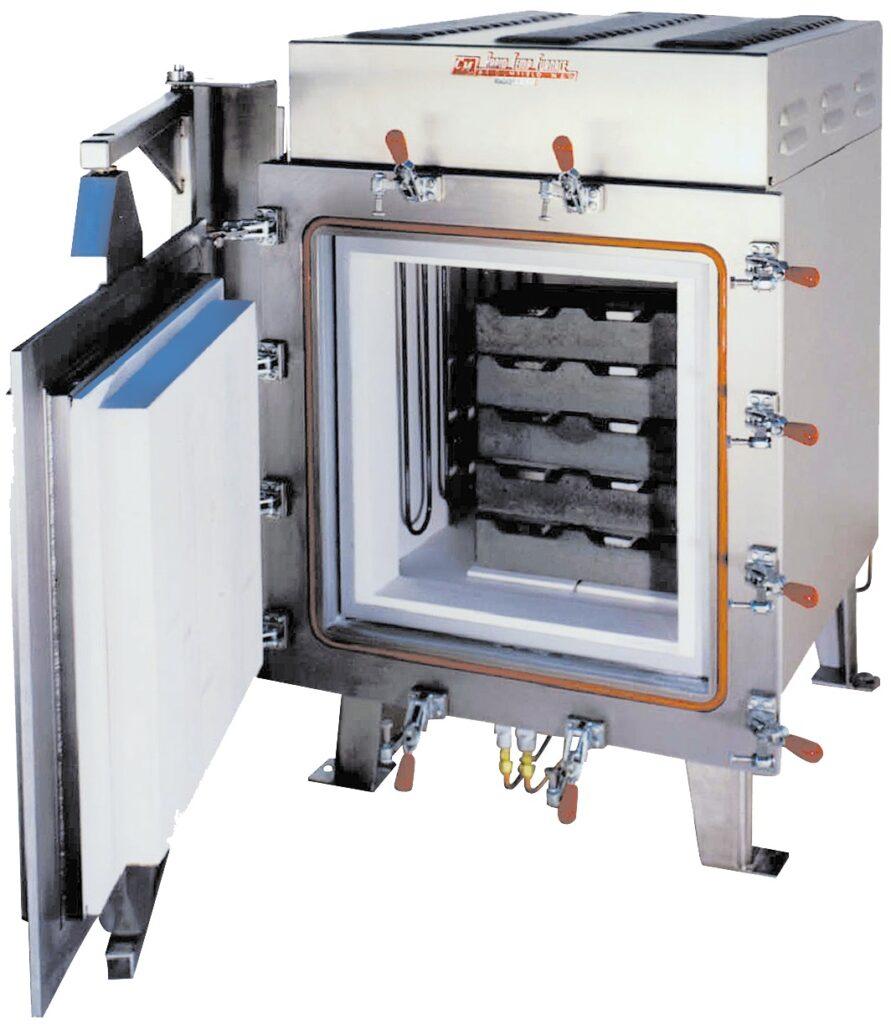
Introduction to Debinding Ovens
Many manufacturing industries use debinding ovens to eliminate binding agents from metal or ceramic parts. This process is critical because it prepares the parts for the next stage of processing, such as sintering or densification.
The basic design of a debinding oven is relatively simple. Typically, a box-shaped chamber heats the oven to a specific temperature. The operator places the parts to be debound inside the chamber and then removes the binding agents through a process of thermal decomposition.
There are two main types of debinding ovens: batch ovens and continuous ovens. Manufacturers use batch ovens for smaller production runs and use continuous ovens for larger production runs. Batch ovens are typically less expensive than continuous ovens, but they require more manual labor to load and unload the parts.
When choosing a debinding oven, there are several factors to consider, including the type of parts being debound, the production volume, and the desired throughput time. Other factors to consider include the oven’s heating method, its temperature range, and its atmosphere control capabilities.
Types of Debinding Ovens
Debinding ovens come in a variety of types, each with its unique features and benefits. In this section, we will explore the different types of debinding ovens and their applications.
Batch Debinding Ovens
Batch debinding ovens are designed for small to medium production runs. They are typically less expensive than continuous ovens, making them an attractive option for manufacturers with lower production volumes. Batch ovens require manual labor to load and unload the parts, which can increase the processing time.
Continuous Debinding Ovens
Continuous debinding ovens are designed for larger production runs. They are more expensive than batch ovens, but they offer faster processing times and higher throughput rates. Continuous ovens are often automated, which reduces the need for manual labor.
Vacuum Debinding Ovens
Vacuum debinding ovens are used when a high degree of atmosphere control is required. They operate at low pressure, which allows for precise control over the atmosphere inside the oven. The aerospace and medical industries often use vacuum ovens for debonding parts that require a specific atmosphere.
Inert Atmosphere Debinding Ovens
Manufacturers use inert atmosphere debinding ovens to produce sensitive parts. These ovens operate in a controlled environment that is free from oxygen and moisture, which could otherwise damage the parts.
Hydrogen Debinding Ovens
The use of hydrogen-debinding ovens is common for debinding parts made from oxygen-reactive metals. These ovens utilize hydrogen gas as a reducing atmosphere to avoid the oxidation of the parts.
Catalytic Debinding Ovens
Catalytic debinding ovens use a catalyst to promote the thermal decomposition of the binding agents. This allows for faster processing times and reduced energy consumption.
Microwave Debinding Ovens
Microwave debinding ovens use microwave energy to heat the parts being debound. This allows for faster processing times and reduced energy consumption. Microwave ovens are often used in the production of parts with complex geometries.
When choosing a debinding oven, it is important to consider the type of parts being debound, the desired throughput time, and the required atmosphere control. In the next section, we will explore the factors to consider when choosing a debinding oven.
Factors to Consider When Choosing a Debinding Oven
When choosing a debinding oven, there are several factors to consider to ensure that the oven meets the requirements of the application. In this section, we will explore the factors to consider when choosing a debinding oven.
Type of Parts Being Debound
The type of parts being debound will impact the choice of debinding oven. To prevent oxidation, parts made from metals that react with oxygen may require the use of a hydrogen-debinding oven. Parts that are sensitive to moisture may require an inert atmosphere debinding oven.
Production Volume
The production volume will impact the choice of a debinding oven. For smaller production runs, you may find a batch oven more appropriate, while for larger production runs, you may require a continuous oven.
Throughput Time
The desired throughput time will impact the choice of a debinding oven. Production schedules may require the use of continuous ovens, which are typically faster than batch ovens.
Heating Method
The heating method of the oven will impact the efficiency and effectiveness of the debinding process. Common heating methods include electric heating elements, gas-fired burners, and infrared heating.
Temperature Range
Consider the temperature range of the oven to ensure that it meets the requirements for the debinding process. Some applications may require high temperatures, while others may require low temperatures.
Atmosphere Control
Consider the oven’s atmosphere control capabilities to ensure that it exposes the parts being debound to the correct atmosphere. Rewrite the sentence in the active voice to make it more direct and easier to understand. Vacuum ovens, inert atmosphere ovens, and hydrogen ovens are examples of ovens with atmosphere control capabilities.
Energy Efficiency
The energy efficiency of the oven should be considered to reduce operating costs. This may include features such as insulation, efficient heating elements, and automated controls.
Safety
We should consider safety features to ensure that the oven operates safely. This may include features such as temperature controls, gas detection, and emergency shut-off switches.
By considering these factors, manufacturers can select the most appropriate debinding oven for their application. In the next section, we will explore the design and components of debinding ovens.
Debinding Oven Design and Components
The design and components of a debinding oven are critical to its performance and effectiveness. In this section, we will explore the design and components of debinding ovens.
Chamber
The debinding oven places the parts in its chamber for debinding. Manufacturers can use stainless steel, mild steel, and ceramic fiber to make the chamber.
Heating Elements
The heating elements of the oven are responsible for heating the chamber to the desired temperature. Heating elements may include electric heating elements, gas-fired burners, and infrared heating.
Atmosphere Control System
The atmosphere control system of the oven is responsible for controlling the atmosphere inside the chamber. This may include features such as vacuum pumps, inert gas supplies, and hydrogen generators.
Control System
The control system of the oven is responsible for monitoring and controlling the oven’s operation. This may include features such as temperature controls, atmosphere controls, and safety systems.
Insulation
The insulation of the oven is responsible for reducing heat loss and improving energy efficiency. Insulation materials may include ceramic fiber, mineral wool, and refractory bricks.
Exhaust System
The exhaust system of the oven is responsible for removing any gases or fumes produced during the debinding process. This may include features such as exhaust fans and ductwork.
Load Handling System
The load handling system of the oven is responsible for loading and unloading the parts from the chamber. This may include features such as trays, carts, and hoists.
Monitoring System
The monitoring system of the oven is responsible for monitoring the performance of the oven. This may include features such as temperature sensors, atmosphere sensors, and flow meters.
The design and components of a debinding oven will vary depending on the application and requirements of the process. By understanding the different components and their functions, manufacturers can select the most appropriate debinding oven for their application. In the next section, we will explore the operation and maintenance of debinding ovens.
Operation and Maintenance of Debinding Ovens
The operation and maintenance of a debinding oven are critical to its performance and longevity. In this section, we will explore the operation and maintenance of debinding ovens.
- Operating Procedures: The operating procedures for a debinding oven will vary depending on the specific oven and application. However, common procedures include loading the parts into the chamber, setting the desired temperature and atmosphere, and monitoring the process until completion.
- Maintenance Procedures: Regular maintenance is essential to ensure that the debinding oven operates effectively and efficiently. Maintenance procedures may include cleaning the chamber, replacing heating elements, inspecting insulation, and replacing worn components.
- Safety Procedures: To prevent accidents and injuries, operators and maintainers should follow safety procedures while operating and maintaining a debinding oven. Safety procedures may include wearing appropriate personal protective equipment, following lockout/tagout procedures, and maintaining a clean work area.
- Calibration and Validation: Regular calibration and validation of the debinding oven are necessary to ensure that it operates within specified parameters. Calibration and validation procedures may include temperature mapping, atmosphere testing, and equipment calibration.
- Documentation: Accurate documentation is necessary to ensure that the debinding oven operates consistently and to troubleshoot any issues that arise. Documentation may include operating procedures, maintenance records, calibration reports, and safety data sheets.
By following proper operating and maintenance procedures, manufacturers can ensure that their debinding oven operates effectively and efficiently. In the next section, we will explore safety considerations when using debinding ovens.
Safety Considerations in Using Debinding Ovens
Debinding ovens can be dangerous if not operated and maintained properly. In this section, we will explore the safety considerations when using debinding ovens.
- Personal Protective Equipment: When operating and maintaining a debinding oven, individuals must wear personal protective equipment (PPE) such as gloves, safety glasses, face shields, and aprons. This may include gloves, safety glasses, face shields, and aprons.
- Lockout/Tagout Procedures: When performing maintenance on a debinding oven, you should follow lockout/tagout procedures. You need to lock and tag the equipment to prevent its energization during maintenance.
- Emergency Shut-Off Switches: Emergency shut-off switches should be located near the debinding oven to allow for quick shutdown in case of emergency.
- Gas Detection: The company should install gas detection systems in the debinding oven to detect any leaks or hazardous gas levels.
- Fire Protection: The installation of fire protection systems, including fire extinguishers and sprinkler systems, in the vicinity of the debinding oven is necessary.
- Proper Ventilation: Install proper ventilation to prevent the buildup of hazardous gases or fumes.
- Training: All personnel who operate or maintain a debinding oven should receive proper training on its operation and safety procedures.
Manufacturers can ensure the safe and effective operation of their debinding ovens by following proper safety procedures. In the next sections, we will explore the applications of debinding ovens in various industries.
Debinding Oven Applications in the Manufacturing Industry
Debinding ovens are used in various industries to remove binding agents from parts. In this section, we will explore the applications of debinding ovens in the manufacturing industry.
- Metal Injection Molding (MIM): MIM is a process used to produce complex metal parts. Debinding ovens are used to remove the binding agent from the molded part before sintering.
- Ceramic Injection Molding (CIM): CIM is a process used to produce complex ceramic parts. Debinding ovens are used to remove the binding agent from the molded part before sintering.
- 3D Printing: 3D printing is a process used to produce parts using additive manufacturing techniques. Debinding ovens are used to remove the binding agent from the printed part before sintering or densification.
- Powder Metallurgy: Powder metallurgy is a process used to produce metal parts from powdered metal. Debinding ovens are used to remove the binding agent from the powdered metal before sintering.
- Investment Casting: Investment casting is a process used to produce metal parts by pouring molten metal into a mold. Debinding ovens are used to remove the wax pattern used to create the mold before casting.
By using debinding ovens, manufacturers can produce high-quality parts that are free from the binding agent used during the manufacturing process. In the next section, we will explore the applications of debinding ovens in the aerospace industry.
Debinding Oven Applications in the Aerospace Industry
Debinding ovens are used in the aerospace industry to produce high-quality parts that are free from binding agents. In this section, we will explore the applications of debinding ovens in the aerospace industry.
- Investment Casting: The process of investment casting produces complex metal parts. To remove the wax pattern used in creating the mold before casting, they use debinding ovens.
- Additive Manufacturing: The process of producing parts using 3D printing techniques is called additive manufacturing. To prepare the printed part for sintering or densification, one must use debinding ovens to remove the binding agent.
- Composite Manufacturing: The aerospace industry commonly uses composite materials because of their high strength-to-weight ratio. The industry uses debinding ovens to cure composite parts by removing the binding agent.
- Powder Metallurgy: The process of producing metal parts from powdered metal is called powder metallurgy. To remove the binding agent from the powdered metal before sintering, the process uses debinding ovens.
- Brazing: The brazing process joins two or more metal parts while debinding ovens are responsible for removing the flux used during brazing.
By using debinding ovens, manufacturers in the aerospace industry can produce high-quality parts that meet the stringent requirements of the industry. In the next section, we will explore the applications of debinding ovens in the medical industry.
Debinding Oven Applications in the Medical Industry
The medical industry uses debinding ovens to create high-quality parts that are free from binding agents. In this section, we will explore the applications of debinding ovens in the medical industry.
- Metal Injection Molding (MIM): The MIM process produces complex metal parts for medical devices. Before sintering, debinding ovens remove the binding agent from the molded part.
- Ceramic Injection Molding (CIM): The CIM process produces complex ceramic parts for medical devices. Before sintering, debinding ovens remove the binding agent from the molded part.
- 3D Printing: Additive manufacturing techniques utilize 3D printing to produce parts for medical devices. To prepare the printed part for sintering or densification, one would use debinding ovens to remove the binding agent.
- Powder Metallurgy: The process of powder metallurgy produces metal parts for medical devices by using powdered metal. Before sintering, debinding ovens remove the binding agent from the powdered metal.
- Investment Casting: The process of using investment casting is to produce metal parts for medical devices. Manufacturers utilize debinding ovens to remove the wax pattern utilized for creating the mold before casting.
By using debinding ovens, manufacturers in the medical industry can produce high-quality parts that meet the stringent requirements of the industry. In the next section, we will explore the applications of debinding ovens in the automotive industry.
Debinding Oven Applications in the Automotive Industry
The automotive industry utilizes debinding ovens to manufacture top-notch parts that do not contain any binding agents. In this section, we will explore the applications of debinding ovens in the automotive industry.
- Metal Injection Molding (MIM): The MIM process produces complex metal parts for automotive applications. Before sintering, debinding ovens remove the binding agent from the molded part.
- Ceramic Injection Molding (CIM): The CIM process produces complex ceramic parts for automotive applications. Before sintering, the molded part undergoes removal of the binding agent using debinding ovens.
- 3D Printing: Additive manufacturing techniques use 3D printing to produce parts for automotive applications. The printed part requires the removal of the binding agent using debinding ovens before sintering or densification.
- Powder Metallurgy: The automotive industry uses the powder metallurgy process to manufacture metal parts by utilizing powdered metal. The process involves treating the powdered metal with a binding agent and then using debinding ovens to remove it before sintering.
- Investment Casting: The debinding ovens remove the wax pattern used to create the mold before casting in the investment casting process used for producing metal parts for automotive applications.
By using debinding ovens, manufacturers in the automotive industry can produce high-quality parts that meet the stringent requirements of the industry. In the next section, we will explore the future of debinding ovens and their potential for further advancements.
Future of Debinding Ovens and Potential Advancements
Debinding ovens have come a long way since their inception and continue to evolve. In this section, we will explore the future of debinding ovens and their potential for further advancements.
- Automation: Automation of the debinding process is an area of potential advancement. Automated loading and unloading systems could increase throughput and reduce labor costs.
- Improved Atmosphere Control: Improved atmosphere control systems could lead to more precise debinding results and the ability to debond parts that are currently challenging to debond.
- Hybrid Ovens: Hybrid debinding ovens that combine two or more debinding technologies, such as infrared heating and vacuum, could lead to more efficient and effective debinding.
- Improved Insulation: Improved insulation could lead to higher energy efficiency and reduced operating costs.
- Smart Ovens: Smart ovens that use sensors and data analytics to monitor performance and predict maintenance requirements could reduce downtime and increase productivity.
- Integration with Sintering Equipment: Integration of debinding ovens with sintering equipment could lead to a more streamlined manufacturing process.
As technology continues to advance, debinding ovens are likely to become more efficient, effective, and easier to use. Manufacturers will need to stay up-to-date on these advancements to ensure that they are using the best equipment for their applications.
Tips for Using Debinding Ovens
Manufacturers can ensure the safe and effective use of debinding ovens by following these tips:
- Read and follow the manufacturer’s instructions for use and safety procedures.
- Wear appropriate personal protective equipment (PPE) such as gloves, safety glasses, and aprons.
- Ensure proper ventilation to prevent the buildup of hazardous gases or fumes.
- Perform regular maintenance and inspections of the debinding oven to ensure its proper functioning.
- Use proper loading and unloading procedures to prevent damage to the parts and the oven.
- Monitor the temperature and atmosphere inside the debinding oven to ensure the process is proceeding as planned.
- Follow lockout/tagout procedures when performing maintenance on the debinding oven.
- Use gas detection systems to monitor for leaks or hazardous gas levels.
By following these tips, manufacturers can use debinding ovens safely and effectively, leading to high-quality parts that meet the requirements of their applications.
Conclusion
Debinding ovens are critical in the manufacturing industry for the production of high-quality parts that are free from binding agents. The different types of debinding ovens available in the market provide manufacturers with the ability to choose the right equipment for their specific application. The design and components of the debinding ovens are crucial to their performance, effectiveness, and safety.
Proper operation and maintenance of debinding ovens are essential to ensure their longevity and consistent performance. Safety procedures should always be followed when using debinding ovens to prevent accidents and injuries.
Debinding ovens have various applications in different industries such as aerospace, medicine, automotive, and many others. As technology continues to evolve, debinding ovens are likely to become more efficient, effective, and easier to use. Manufacturers will need to stay up-to-date on these advancements to ensure that they are using the best equipment for their applications.
In conclusion, debinding ovens play a vital role in the manufacturing industry, and their continued development will continue to shape the manufacturing processes of the future.
how to use a debinding oven?
Time needed: 12 hours.
By following these steps, manufacturers can use debinding ovens safely and effectively, leading to high-quality parts that meet the requirements of their applications.
- Read the instructions
Read the manufacturer’s instructions for the debinding oven before use. The instructions will provide important safety information and guidelines for using the oven.
- Prepare the oven
Ensure that the oven is clean and free of debris. Ensure that you check all the controls to make sure they are functioning correctly and set the temperature and atmosphere controls appropriately for the material you are debinding.
- Load the parts
Load the parts into the debinding oven using appropriate loading and unloading procedures. Ensure that the parts are evenly spaced and that they do not touch each other.
- Start the debinding process
Close the door of the debinding oven and start the debinding process according to the manufacturer’s instructions. Monitor the temperature and atmosphere inside the oven to ensure that the process is proceeding as planned.
- Monitor the process
Monitor the debinding process to ensure that it is proceeding as planned. Check the temperature and atmosphere inside the oven regularly to ensure that they are within the recommended range. Adjust the settings if necessary.
- Remove the parts
When the debinding process is complete, remove the parts from the oven using appropriate loading and unloading procedures. Be careful when handling the parts, as they may be hot.
- Perform post-debinding processes
Perform any necessary post-debinding processes, such as cleaning or further processing, according to the manufacturer’s instructions.
- Perform maintenance
Perform regular maintenance on the debinding oven to ensure its proper functioning. Follow the manufacturer’s instructions for maintenance procedures and schedules.
FAQs
A debinding oven is a piece of equipment used in the manufacturing industry to remove binding agents from parts to prepare them for further processing.
Debinding ovens can be used to remove binding agents from parts made of metal, ceramic, or composite materials.
Debinding ovens are used in various industries, including aerospace, medical, automotive, and many others.
There are various types of debinding ovens available, including batch ovens, continuous ovens, vacuum ovens, and microwave ovens.
Debinding is the process of removing binding agents from parts, while sintering is the process of heating the parts to bond the particles together.
Debinding ovens are designed specifically for the debinding process, but some ovens can also be used for other processes such as drying or curing.

